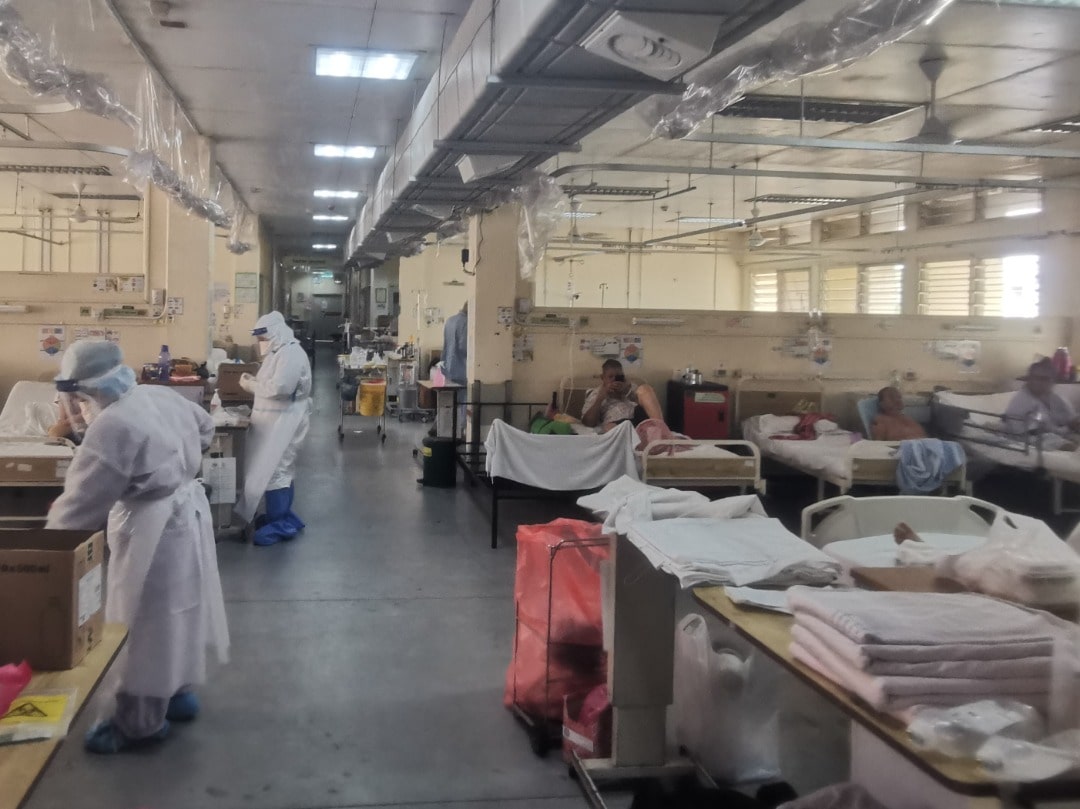2021 marks the year when Malaysians continued their fight against something which they cannot see with their eyes, hear with their ears, smell with their noses, taste with their tongues, or feel with their hands.
While Covid-19 is extremely small in size, it has brought many changes to our lives, both individually and as a society.
Throughout the year, many incidents happened beyond our control — children became orphaned, spouses became widows or widowers, parents lost their children, and families lost their breadwinners, among many tragedies.
I remember vividly in January 2021 that we (the medical fraternity) thought that we had won the battle against Covid-19 (of course, not the war), only to see that it was just the beginning of a new battle.
We welcomed the start of the year by reopening our isolation wards, isolation intensive care units (ICUs), and isolation triage units. Cases were on the rise at that time, with many in-hospital staff being reassigned as frontliners.
At the same time, we saw how a group of medical staff from several different departments helped each other in managing Covid-19 patients before we were joined by some of our counterparts in West Malaysia.
Back in April 2020, when the situation was so bad that our cries were disregarded by the federal and state governments, some of us decided to pen down our thoughts and wrote to CodeBlue.
As a civil servant on the ground (with the lowest government post as a degree holder), we are bound by regulations that prohibit us from speaking out about the actual situation.
During that time, mainstream media did not portray the actual situation that was happening in Sibu. People needed to know that the wards were extremely crowded, patients were waiting to receive intensive care, and oxygen ports were insufficient.
We were grateful and thankful that help did come to us after the article was published. We received more staff members, together with more medical equipment such as ventilators, infusion pumps, proper hospital beds, drip stands, and many more.
The field hospital and modular ICU opened at the end of October 2021, during which Covid-19 cases started to decrease. Most of us felt that these facilities should have come much earlier. Nevertheless, we were still grateful for the help sent by the government.
On another note, the main bulk of the ground workers are contract doctors, nurses, and pharmacists. Without them, I cant’t imagine how our health care system would cope.
We hope that politicians, policymakers, and hospital directors will tackle the problem and come up with a well-planned solution to ensure that the health care system does not collapse in the future.
Contract medical workers are the future of our health care system. Give them a proper career pathway, as well as security.
As 2021 comes to an end, we sincerely and silently pray that we will never have to go through this pandemic again.
The Health Ministry is now better equipped with knowledge of how to handle a pandemic, whether it involves public health measures, or specific disease management. We have learnt much in these two years.
Implementing another nationwide Movement Control Order (MCO) would be a bad choice; specific locality-targeted MCOs are more logical.
Nevertheless, the responsibility of infection control lies with the people themselves. With good self-discipline, good self-adherence to protocols, I believe we won’t have to go through another 2020 or 2021.
Signing off,
A^2, from Land of the Swan
This essay was written by a doctor in Sibu Hospital. CodeBlue is publishing this anonymously because civil servants are not permitted to speak publicly without authorisation from their superiors.
This article is part of an exclusive series of guest essays by experts in the health care sector for CodeBlue on their reviews of Malaysia’s 2021 Covid-19 response and their outlook for 2022.








